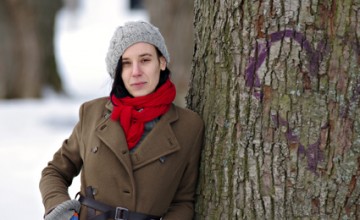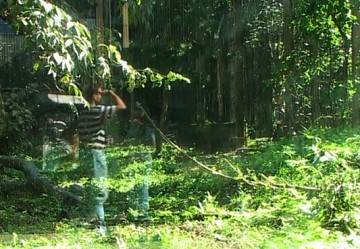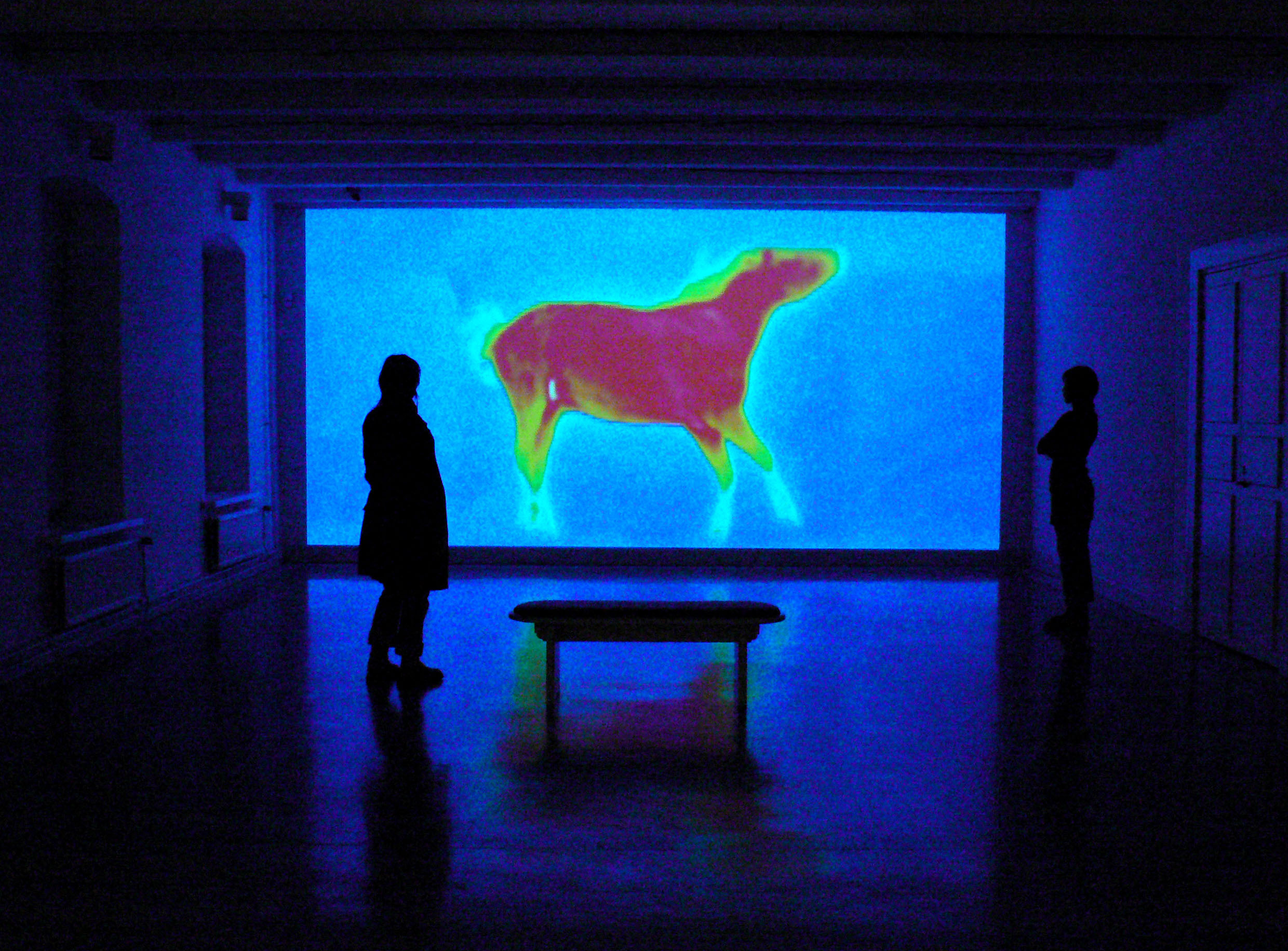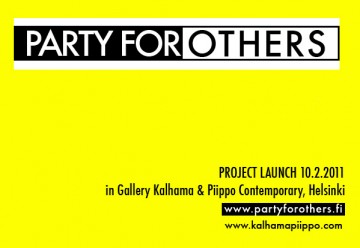Terike Haapoja is a Finnish visual artist based in Helsinki. She has a Master’s degree from the Theater Academy of Finland (Department of Performance Art and Theory) and from the Academy of Fine Arts in Finland (Department of Time- and Space-based Arts). Haapoja’s work explores the connections between new technology in contemporary art, natural scientific worldviews, and environmental ethics. She has a background in activism, and takes part in the discourse concerning art’s relationship to sustainability and environmental issues. Haapoja is a member of the Finnish Bioart Society, and has founded the Ecology, Ethics and Art program at the Academy of Fine Arts in Finland.
Haapoja’s work consists of videos, installations and stage projects that are characterized by an innovative use of new media and new technology. She also works extensively with professionals from the natural sciences and from different fields of art. Her work has been exhibited widely in solo and group exhibitions and festivals both nationally and internationally. Haapoja has also received numerous grants, prizes and awards. She was honored with the Finnish Art Association’s Dukaatti prize in 2008, the Finland Festivals’ Young Artist of the Year prize in 2007, and received a SÄDE prize for best visual design in theater in 2010. In 2011, Haapoja was nominated for the Ars Fennica Award. She has received numerous project and working grants form the Finnish State Art Fund and private foundations, and her articles and essays have been published in art journals in Finland as well as internationally.
Haapoja’s latest installation opened August 19 at the Amos Anderson Art Museum in Helsinki. Titled Edge of the World, it is a work that tests and challenges the limitations of our world as we know and accept it. Haapoja is represented by Gallery Kalhama & Piippo Contemporary in Helsinki, Finland.
For this interview, I met with Terike just around the corner from the Amos Museum, where she was installing her work, accompanied by her beloved dog Lieska.
Georgia Kotretsos: You’re currently working on an artistic research PhD at the Academy of Fine Arts in Helsinki. The umbrella research title for both your studio and theoretical work is Technologies of Encounter. What exactly is put under the microscope here, and how does this inquiry manifest in your studio work as well as your writing?
Terike Haapoja: I started to work on the PhD because I have always liked to write about art and to think about the theoretical and philosophical context of the work. I have published in Finnish and international art journals, mostly essays and also more academic texts. I think that the PhD program is a good way to be connected to the discussions happening in art and also outside of my own field of practice.
My research question comes from my way of working with new technology and scientific technologies. While working on art projects, I have thought of the ways in which media shapes our attitudes towards the object of our investigation. As the subject or the “motif” of my work is often related to nature, and as I often use scientific technologies, I look at this question of “mediatization” especially in terms of human/nature relationships. The approach is eco-criticism, so I try to see how the ideologies of domination or control over nature are embedded in artistic practices, as well as in my own practices.
I am now focusing on my art, but I will concentrate on the writing part for the next few years and hope to get the PhD completed by 2014.
GK: Earlier this year, you were nominated for the prestigious Ars Fennina Award, awarded by the Henna and Pertti Niemisto Art Foundation, one of an array of awards and prizes in Finland given by the public. I am usually skeptical when awards monopolize an art community, but in this case I was very pleased to discover things were otherwise in Finland. On this note, how important do you think validation in the form of an award is for professional artists?
TH: Of course it is important for anyone doing creative work to get good feedback and a sign that what he or she is doing has been understood, and thought of as something worth saying. Then again, art prizes are so random, they depend on the passing winds, and who you know, and what’s cool at the moment, so I would not say that any prize tells us what is good or landmark art. I think art prizes are, at their best, more like proposals: “look this way, would this kind of approach to reality be interesting?” Then, the prize can really bring people’s attention to ways of thinking and working that would otherwise not be so visible.

2011 Ars Fennica Award candidates. Left to right: Adel Abidin, Ansi Kasitonni, Pekka Abidin, Terike Haapoja, and Hannaleena Heiska.
GK: While thinking about your work, the same few words and phrases kept coming to mind, such as “the poetics of science” and “the nature of technology.” Is there such thing as the “nature” of technology? I do not mean “nature” in terms of the attributes or qualities of technology, so to re-phrase the question: can technology become “second nature,” and if it can, how are its symptoms experienced?
TH: I guess questioning this dichotomy is exactly what is at the core of my research. We tend to put things of nature into one box, and things of culture and technology and science into another, but there really is no such division. Science or technology is not separate from nature, any more than nature is separate from technologies, intelligence or cognition. This division is also embedded in our language, so it’s really difficult even to talk about art without repeating this structure. I think art is a way of breaking through the structures of language, and making those structures visible.
In another way, my work is a lot about the nature of technology. I try to make the way technology works visible, not hide it: if I work with an IR (infrared) camera, the piece is always as much about how this technology functions and how it structures our understanding of the world, as it is about the subject matter.
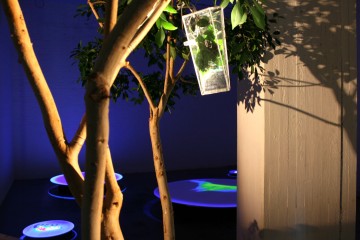
Terike Haapoja. "Dialogue," 2008. Interactive installation consisting of live trees, electronics, sound, light, and CO2 sensors. Breathing programming by Aleksi Pihkanen and Gregoire Rousseau.
GK: Your single-channel video Entropy depicts the cooling down of a horse’s body after its death, recorded with an infrared camera. (The original 9-hour recording was edited to a 25 minute loop). On one level, Entropy charts a path for an in-depth conversation about life and death, and the duration of that transitional process. I’m mostly interested in the painterly quality of the work–its palette surprisingly echoes Der Blaue Reiter. Was that kind of conversation intentional?
TH: Yes, the links to art history are there, but I don’t start from that. I think that the link is there anyway, just because it’s the same culture that has developed abstract painting and data visualization and IR cameras and so forth. There is a certain aesthetic that follows, and of course that is visible to me.
GK: Your piece Durational Landscape has that contemporary “reality show” quality to it, while also addressing the long tradition of landscape painting. What is your relationship with art history and traditional art disciplines and practices?
TH: I think that there are a few basic, big themes like materiality, time, mortality, and communication that art always addresses, and with mediums and new cultural settings these questions are given a new form or point of view. The connection between a web cam image of a bird’s nest and Romantic landscape painting is obvious; it’s the same issue tackled in a new setting, and thus it enables a new experience of that issue. A new medium is always a new articulation, a new way of approaching age-old questions. That is why I am interested in using “new” technologies. They shed new light on the old ones! I don’t believe that our experience is ever free from the contexts and technologies through which we observe or experience the world.
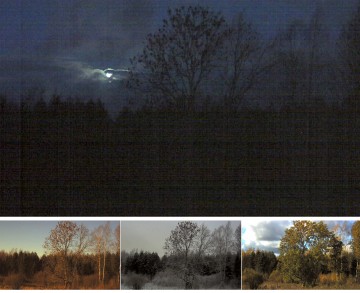
Terike Haapoja. "Durational Landscape," 2008. A permanent installation at the Theatre Academy, Department Of Lighting and Sound Design, Lintulahdenkatu, Helsinki. The work consists of a high-definition web cam image portraying a forest in southern Finland, and a soundscape streamed from the same site. The landscape image changes slowly over the hours and seasons, maintaining a mode of constant change. The soundscape is audible from 8 speakers placed in the corridor of the building. The technical assistant was Juha Storm. The installation was made in collaboration with Metsähovi Radio observatory.
GK: What does it take to plan and administer your works? What is the level of teamwork that takes place before anything is realized?
TH: I usually plan the work myself, even the outline of the technical setting, how it works, what it looks like and so on. Video and sound work I do myself all the way. But when there needs to be programming, or if I’m working on a large-scale exhibition project, I usually end up with a team of professionals from different fields. Then it’s like a stage production where I’m the director. Usually the people I work with are not artists but professional programmers, engineers, biologists, etc., but the collaboration affects my working methods a lot, and the discussions are really important to my work. But this is usually the realization part of the project; all the planning is sketchbook-based.
In my Closed Circuit-Open Duration exhibition project, for example, there were people doing programming, a biologist helping with bacteria cultivation, and people working on the exhibition construction. In other projects, I have worked closely with forest ecologists and the computer programmers they work with.
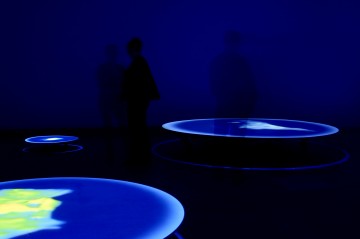
Terike Haapoja. "Open Circuit - Open Duration," 2008. Solo exhibition at Forum Box Gallery, Helsinki. The seven exhibition works create a garden where organic, digital, electronic, human and non-human processes overlap. The viewer becomes an inhabitant of the garden as he or she wanders through different spaces and scenery. The installations investigate the ways in which we can perceive the world beyond our senses, and seek new possibilities for interaction between the human and non-human worlds. The works use methods of environmental research to realize this interaction; different elements, such as the circulation of CO2, sound waves or changes in light, merge with the viewer's movements. The exhibition includes collaborations with environmental researchers and professionals from the fields of biology, computer programming, and technology.
I worked on Edge of the World in collaboration with a researcher from the state technical development center who is working on augmented reality. Another upcoming project, Party for Others, uses the form of a political party to look at the human-nature relationship. For that, I collaborated with a producer and built the piece out of interviews with politicians and activists. At its best, the form of the piece or the exhibition is pretty ready when it leaves the sketchbook stage. My work is not process-based in that sense. But of course, the process affects the outcome a lot.
GK: Tell me a little bit about the “edge” part of Edge of the World at the Amos Museum, and how it’s demonstrated in this work.
TH: Edge of the World is an installation in which the viewer goes into a dark and silent labyrinth-like space alone, equipped with virtual reality/data-glasses, headphones and a backpack. With this equipment, he or she is able to navigate the space: she hears wavelengths not normally audible and sees infrared light that is invisible to the naked eye. We then add virtual elements to this scene so that the boundary between perception and imagination becomes blurred. For me, the “edge of the world” is not just the remote places in the world such as war zones, deep seas, etc., but also the border of our own perceptions.
And, that’s a wrap!
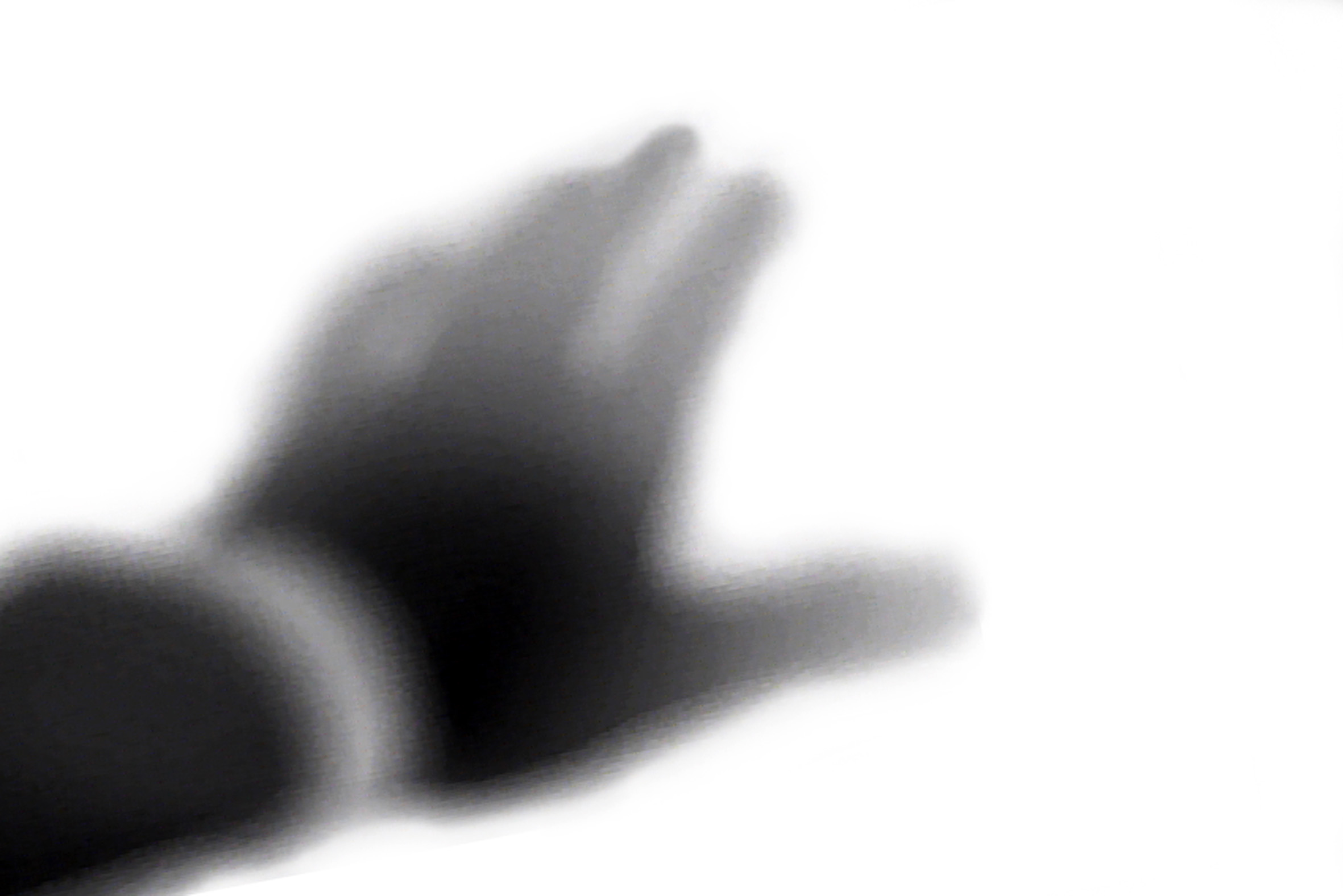
Terike Haapoja. "Edge of the World," 2011. Thermal image courtesy Amos Anderson Art Museum, Helsinki. Made in collaboration with Sound Designer Tuomas Norvio and Tatu Harviainen, Senior Scientist at VTT.

